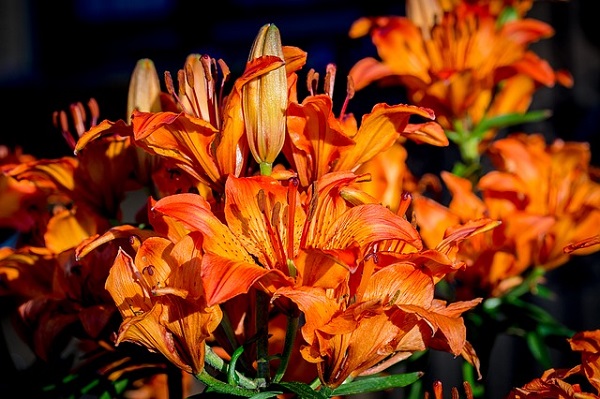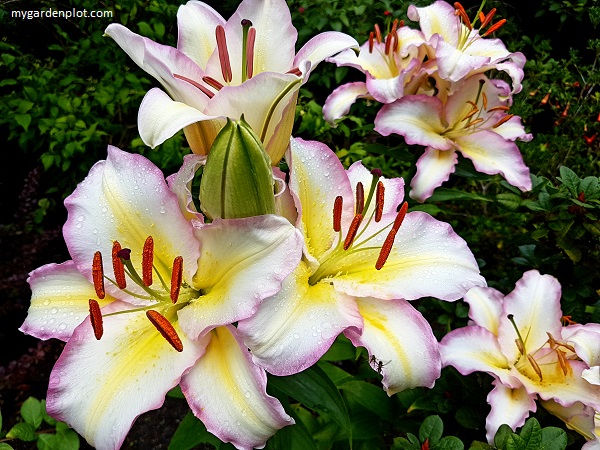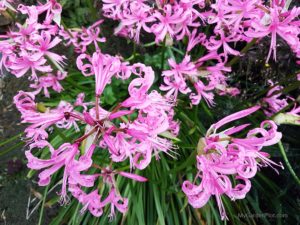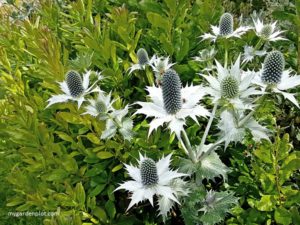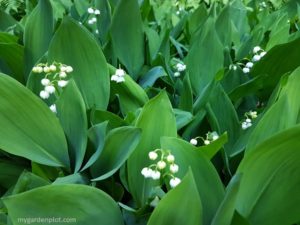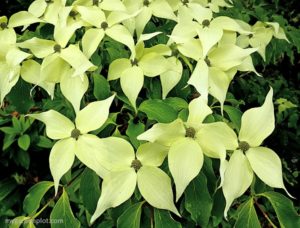Lilium (Lily): How To Plant, Grow And Care for Lilies
The genus Lilium (lily) is a popular fragrant plant with an exquisite flower. Native to North America, Europe and Asia, it is said to be the oldest cultivated plant. In general terms, lilies like cold winters and warm summers. In the Pacific Northwest, we also have native lilies, the most common of which is the L. columbianum (Tiger Lily or Columbia Lily). There are many varieties in the lily family, and like dahlias, there are different colours, sizes, and some blooming early summer while others in early autumn – though most bloom during the months of July and August. Following are tips for growing true lilies and how to plant and care for your lily flowers and bulbs.
Lilies are herbaceous perennials grown from a bulb or seed. Most are hardy and similar to clematis, some lilies prefer a sunny location that has cool conditions at its root base. But other lilies like partial shady locations. The selection of colours and sizes can be overwhelming, but there is something for every summer garden, depending on your garden orientation. Lilies nestled against a backdrop of rhododendrons or azaleas brightens up an evergreen area in late summer.
Lilies are beautiful as a cut flower. Cut about 1/3 of the stem and remove the anthers as they stain clothes terribly. Choose buds that are about to open.
The name ‘lily’ is commonly associated with various plants, such as the lily-of-the-valley or bowden lily. These are not from the genus Lilium, but likely, there is some aspect about these plants with the name lily that reflects the true lily.
Lilies At A Glance
Type: Herbaceous Perennial
Location: Varies – Full Sun to Partial Shade
Blooming Season: Varies – From Late Spring To Early Autumn
Size: Varies – From 30 cm (1 foot) To 2 metres (6.5 feet)*
Zones: 4 – 9 (other zones may grow lilies as annuals)
*The L. pardalinum var. giganteum (Panther Lily) can grow to 3 metres (10 feet) tall
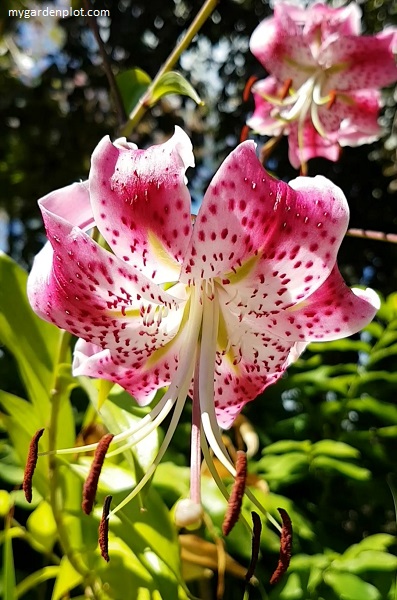
When And How To Plant Lily Bulbs
One of the most important things that must be taken into account when planting lily bulbs is good drainage. The lily bulb will rot in soil conditions with poor drainage. They thrive in humus-rich, well-drained soil with even moisture year-round. While lilies will grow in most gardens, a neutral or slightly acid site is ideal. And depending on the variety a sunny or partly sunny location where other shrubs can help keep the bulb and roots cool– similar to how you would position clematis with its head in the sun and its roots in the shade shielded from the hot afternoon sun.
Lily bulbs can be planted in spring, but for best results plant in autumn (fall). Most varieties need the bulb to be planted about 10 – 15 cm (4 – 6 inches) deep. For a dramatic flower display plant, a group of three or more bulbs together about 25 – 30 cm (10 – 12 inches) apart. For huge varieties, spacing may need to extend 45 cm (18 inches) between planted bulbs. When purchasing your bulbs from the garden centre check the recommendations for each variety. Do not be tempted to plant too close together. Good air circulation will discourage disease and pest infestations like aphids later in summer. Mix bone meal into the soil when planting the bulbs and add mulch afterwards with enough water to ensure the bulbs have damp soil.
Lilies can be easily grown in a pot and look lovely in large containers with several planted together.
Lilies can also be grown from seed but it takes many years for it to mature before flowering. With the easy access to what may seem like an overwhelming choice of different lily bulbs at a garden centre, most gardeners prefer to start their lily garden with bulbs.
How To Care For Lily Plants
Early spring is an good time to prepare staking supports as your lily grows. Ensure the mulch from the previous winter removed as it may be too heavy and will hinder or break new growth. Protect any early shoots with a cloche or cardboard box from frosty nights.
Add a slow-release balanced fertilizer (10-10-10) in spring along with some rich organic mulch will help get your lily started. The mulch will also help keep the soil cool. Later for the blossom development, a fertilizer for flower production with phosphorus and potassium should be applied.
Water regularly. Check that the soil never dries out and keep evenly moist.
To propagate lily bulbs, lift and separate clumps in autumn or spring. Generally new little bulbs are produced and can easily be broken away. Most lilies benefit from being left to clump for a few years before being divided.
Garden Pests
In addition to aphids mentioned above, deer and rabbits love lilies too. Rabbits can devour the young shoots in spring. Plans need to include planting lily bulbs in a protected or fenced garden away from hungry deer. Planting bulbs in a pot or container in a location where rabbits can’t access it during spring with help protect emerging stems. Lily bulbs are edible and rodents or squirrels may dig up bulbs. And weevils can be a nuisance, and other beetles, slugs and snails can also take a nibble of bulbs and young stems in spring. Apply slug pellets early in spring to deter slugs and snails from munching on new stems.
Winter Maintenance
In zones 4 to 9, lilies can be left in the ground. They are hardy and are not bother by wet, cold winters so long at the location drains well.
After the faded blossoms have been removed at the end of the season, leave the stalks and leaves to turn yellow and wilt naturally. True lilies benefit with redirecting the energy back into the bulb. Once they have entirely withered and can easily be removed from the base, clean up the area and add leaf mulch as protection.
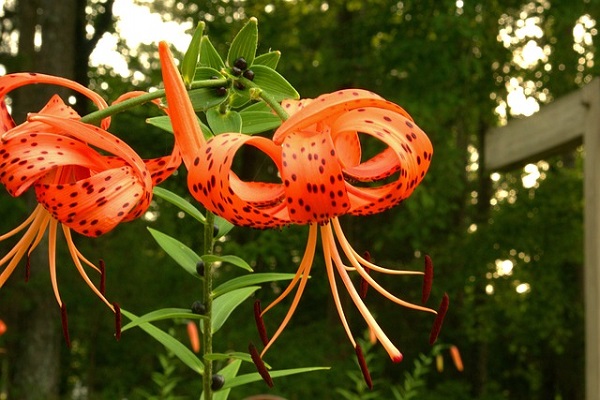
Spend more time in the garden! Large choice of gardening supplies for your garden bed and maintaining lawns, and fun art and sculptures for your garden and vegetable patch. Check out the latest deals for garden supplies. View the awesome deck decorations and patio furniture, and the necessary garden tools, and more.
Lily Hybrid Classifications
There are approximately 100 species of the genus Lilium. These are the forebearers of the garden lilies of today. With so many different hybrid lilies to choose, here is an overview of the various hybrid classifications. These are divided by the various attributes, whether they flower from early summer, mid-summer or early fall. This general make-up helps narrow down the selection and identify the lily’s needs when planning your garden.
Asiatic Lily Hybrids (Division 1)
The Asiatic hybrids are the earliest lily to bloom in the season starting late spring or early summer. They are a diverse group initially bred from the Asian lily species. They are one of the most popular lilies found in family gardens and are equally admired as cut flowers, especially the upward-facing blooms. Asiatic hybrids are cold hardy (some suitable for zone 2), adaptable, thrive in sunshine, and while not fussy, they need to be planted in well-draining soil. They range in size, and some of the newer Asiatic hybrids are strong and will not need staking. They are virtually pest-free. Flowers tend to be large and brilliantly coloured and include yellows, pinks, reds, oranges, cream and white. Some are bicolours or tricolours. However, Asiatic hybrids generally tend to lack the strong fragrance associated with lilies. There are many cultivars within this classification, some with flowers that face upwards, and others with flowers that face outwards or downwards.
Martagon Lily Hybrids (Division 2) - Turk’s Cap Lily or Tiger Lilies
Candidum Lily Hybrids (Division 3) - Madonna lilies
The Candidum hybrids come from the L. candidum (Madonna Lily), the typical, fragrant, white funnel-shaped flowered lily. Native to the Balkans and the eastern Mediterranean, they have been cultivated for over 3000 years. They are a small group of hybrids that bloom early to mid-summer. Flowers are generally outward, or downward-facing and are very fragrant. They are not as hardy as the Asiatic or martagon hybrids and are susceptible to diseases. They can survive in zone 5, subject to having winter protection.
American Lily Hybrids (Division 4)
The American hybrids classify those that come from wild lilies native to North America. In the Pacific Northwest (PNW), they bloom late spring or early summer. Includes some very tall species, L. pardalinum (Leopard Lily), and one of the most common native lilies in the PNW, the L. columbianum (Tiger Lily or Columbia Lily), which likes a part shady locations and well-drained soil. And from the east coast, the L. canadense (Canada Lily) thrives in dappled shade and moisture-retentive soil. Most of the American hybrids originate from the PNW species. The flowers are generally downward-facing, and Turk’s cap-shaped.
Longiflorum Lily Hybrids (Division 5) – Easter Lily
Trumpet And Aurelian Lily Hybrids (Division 6)
The trumpet and Aurelian hybrids derive from Chinese species with purple bulbs. They are generally very tall, and the L. regale being the most popular lily in this hybrid group. It is the classic trumpet-shaped fragrant flower which blooms in July and August. They usually need staking as the large flowers can be too heavy, especially if it is windy. They are hardy in zones 4 to 9.
Oriental Lily Hybrids (Division 7)
Interdivisional Lily Hybrids (Division 8)
The interdivisional covers those hybrids breed between species and hybrids. One result is the LA hybrids – which comes from crossing the Easter lily (L. longiflorum being the “L”) with the Asiatic lily hybrids (being the “A”). The other breeding is the OT hybrid, which resulted from crossing Oriental lilies with the trumpet/Aurelian hybrids. And the OA hybrids, which was crossing the Oriental lilies with Asiatic hybrids. And so it goes, I am sure as the future will continue to bring new cultivars to choose from.
Lily Species (Division 9) – Wild Lilies
Division 10
